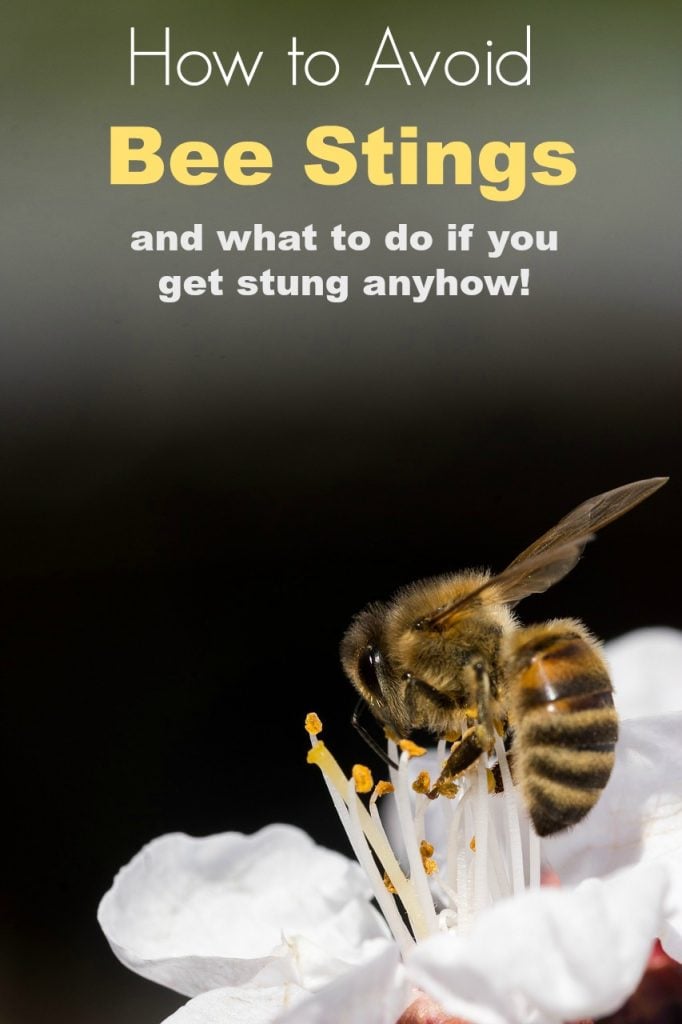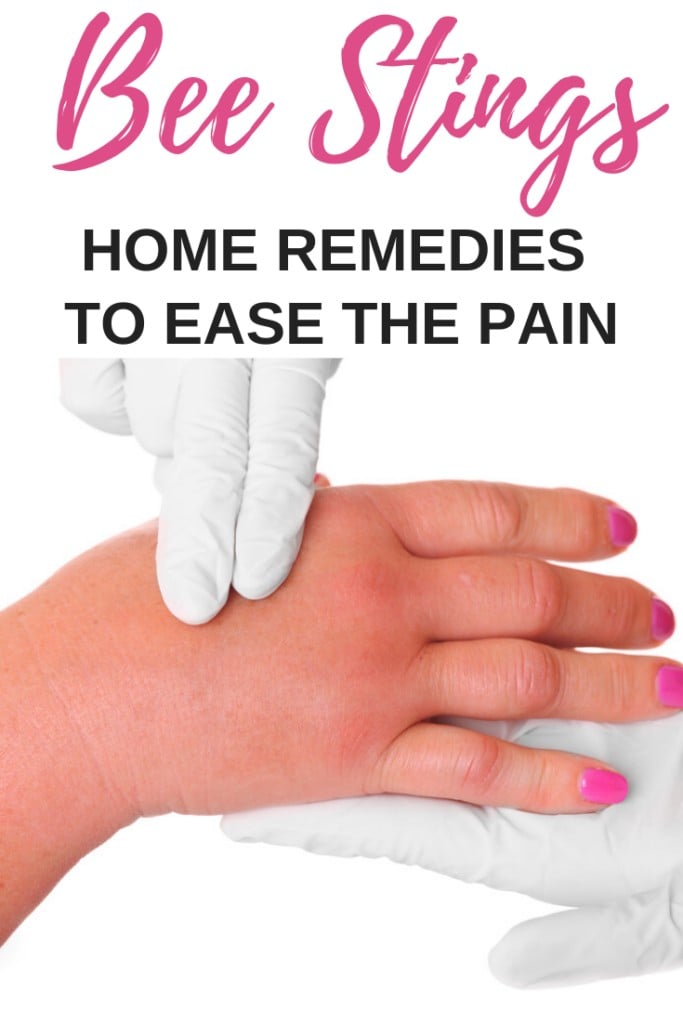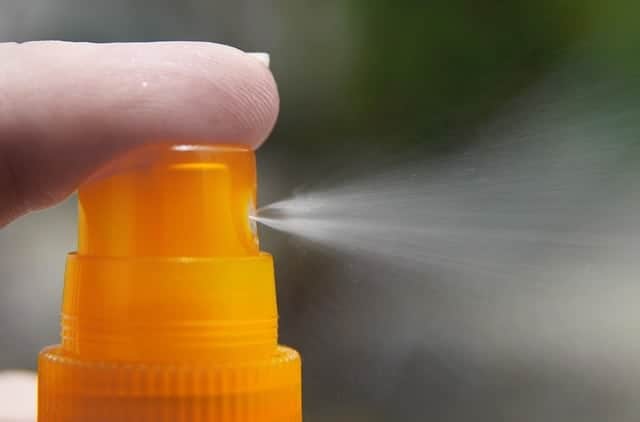With the nice weather finally here, I am spending more and more time outside. If you love activities like hiking, gardening, and nature walks, knowing how to avoid bee stings can make a big difference in how much you enjoy your time outside. And if you are allergic to bees, avoiding bee stings can save your life! I thought I would share a few tips that may help you have a safer and much more pleasant nature experience this summer.
Posts feature partner companies & may be sponsored. Post contains affiliate links & I will be compensated if you make a purchase after clicking on links. As an Amazon Associate I earn from qualifying purchases.

Table of Contents
Why Do Bees Sting?
Bees sting for a number of different reasons, however, it really depends on the type of bee. And if you are talking about wasps, hornets, and yellow jacket stings, those are usually different than honeybee stings.
In general, honeybees are very gentle. Since they die when they sting a person, they generally don’t sting for no reason. If they are out collecting pollen, they will usually just leave you alone.
A honeybee will, however, protect it’s hive to the death. So, be very aware of your surroundings and try to avoid areas where lots of bees are coming and going.
Why do wasps sting? Well, since wasps, hornets, and yellow jackets don’t die when they sting you, they don’t usually hold back if they feel angered or threatened. While few species are intensely aggressive for no reason, try not to tick them off on purpose.
Keep your eyes open and if you see once in your gardening space, just back off a bit until he decides to move on before pruning your bushes. Unless you collide with or swat at one, you are probably okay but play it safe!

✯Don’t want to miss the next post?✯
Follow Turning the Clock Back on Facebook | Twitter | Pinterest
Or join the private Facebook group for simple tips on going green!
How to Avoid Bee Stings
I have tried hard to attract bees to the yard but I also work hard to avoid bee stings. If you are curious about WHY you want bees in your yard, check out my post on What Bees Do and How to Protect Them for more information. Here are a few tips on how to avoid bee stings while you are gardening or enjoying your latest outdoor workout (check out my post on wildlife safety tips to stay safe from other critters!).
- Avoid wearing strong smelling bath and beauty products. Bees and wasps can be attracted to your floral soap and scented lotions.
- Wear closed toe shoes outside. Do not wander around your yard in bare feet, especially since there are many stinging insects that make their nests in holes in the ground (if you have learned this the hard way, check out my post natural bug bite treatments!).
- Wear earth toned clothing. Bees and wasps love brightly colored objects, whether they are flowers or your floral shirt. Wear earth tones so as to avoid bee stings as much as possible.
- Don’t freak out! If a bee lands on you, swatting at it and screaming will only confuse and anger him. Wait patiently for him to leave or gently brush the little bugger off with a piece of paper.
- When swimming, be cautious of bees or wasps trapped on the surface of the water. If you find them, remove them with a cup of some sort to avoid being stung.
- Keep your eyes out for nests. Be observant of the area around you. If you see lots of insects flying to and from a particular area, avoid it. Bees and wasps are much more aggressive when protecting their hives.

7 Home Remedies For Bee Stings
Knowing how to avoid bee stings is important. Bee repellents can be a great help when spending time outdoors. But, what do you do if you get stung anyhow? Watch this video below for 7 home remedies for bee stings to relieve the pain!
Homemade Bee Repellent
I am all for attracting bees to my yard, however, there are places that I would like them to avoid. Like my patio while I am eating on it! I have worked hard to create a peaceful backyard space and bees are not all that peaceful!
And if you have young children, learning to repel bees can make your outdoor time much more enjoyable. Teaching kids how to avoid bee stings is important but this homemade bee prevention spray may help!

Ingredients:
Spray bottle
Liquid dish soap
Water
Peppermint Oil
Cayenne Pepper
Cinnamon
Directions:

Diane is a professional blogger and nationally certified pharmacy technician at Good Pill Pharmacy. She earned her BS in Microbiology at the University of New Hampshire and has worked in cancer research, academics, and biotechnology. Concern over the growing incidence of human disease and the birth of her children led her to begin living a more natural life. She quickly realized that the information she was learning along the way could be beneficial to many others and started blogging and freelance writing to share this knowledge with others. Learn more about her HERE.
